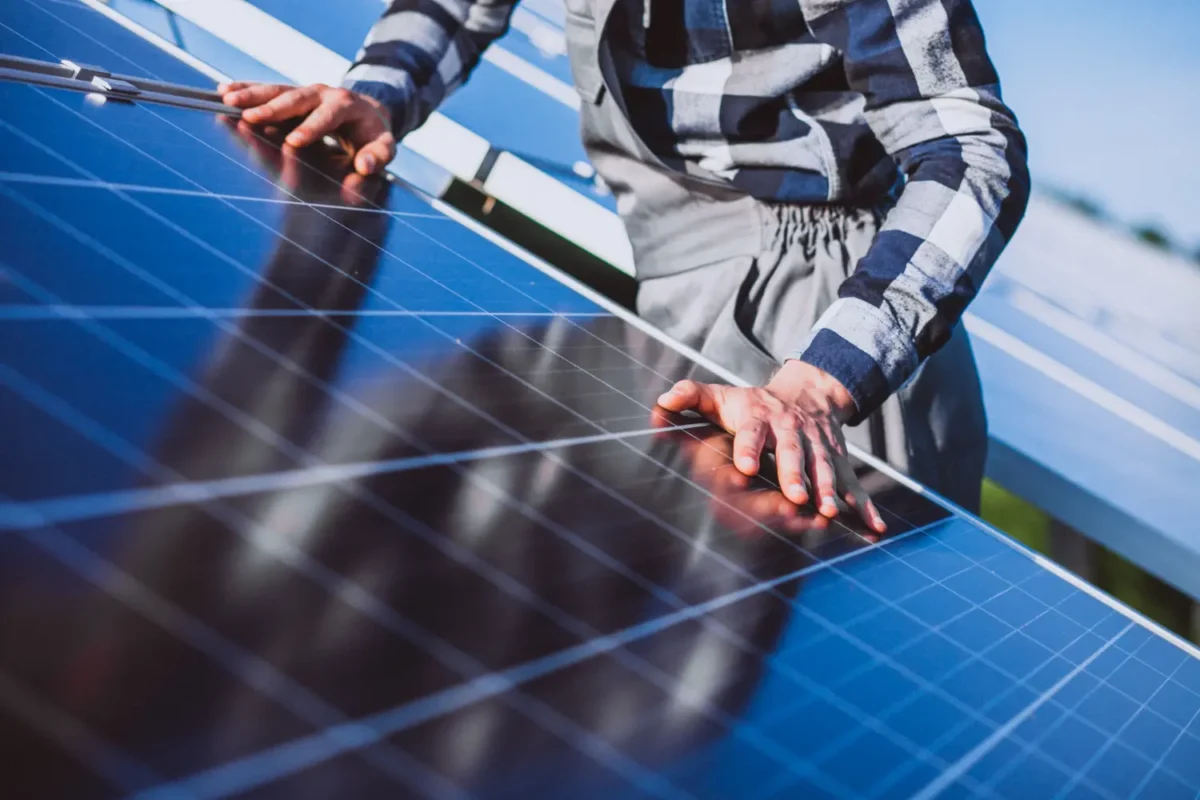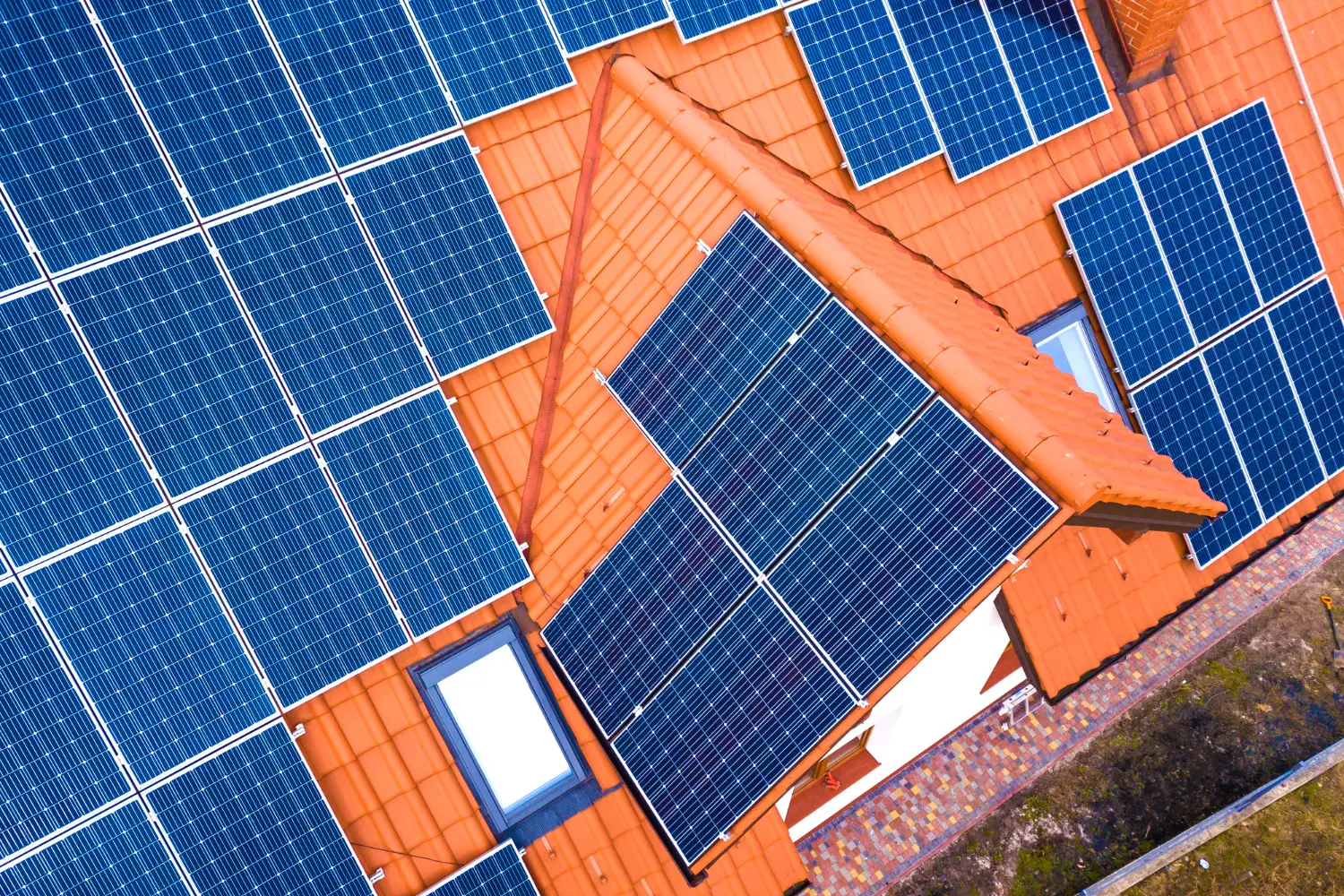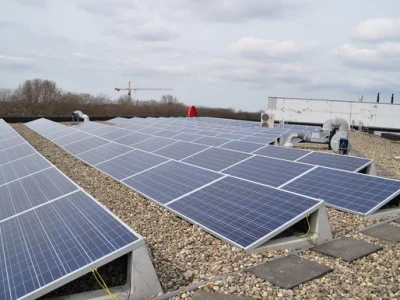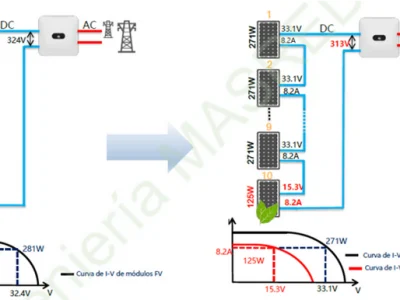Solar panel efficiency is one of the most relevant metrics to evaluate photovoltaic systems, but it is often misinterpreted. To truly understand what solar panel efficiency really is and what it means, you need to understand some basic concepts of how panels work, including the science behind them, testing standards and environmental factors that might influence them.
What Does Solar Panel Efficiency Actually Mean?
If you are wondering “are home solar panels worth it?” you might be trying to gather some information, such as cost, duration and efficiency of solar panels.
While the cost and duration might differ from one brand to another, solar panel efficiency is an objective metric.
Definition and Formula: Watts vs Area
In photovoltaic technology, efficiency measures how much of the incoming solar energy a panel converts into usable electricity.
Mathematically, it’s expressed as the following formula:
Efficiency = Maximum Power Output / (Solar Irradiance × Panel Area) × 100
This is measured under Standard Test Conditions (STC) in order to provide a reliable figure that represents the module’s ability to convert sunlight into electricity.
Efficiency vs Power Output: Not the Same
Efficiency is not the same as power output. A panel’s wattage reflects its total electrical output under standard test conditions, while efficiency reflects how effectively it turns the available sunlight into electricity according to its area.
For example, a 450 W panel may be less efficient than a 400 W panel if it is larger, and this is crucial to design the optimum system for limited spaces. In open-field systems, nevertheless, the total output may matter more than the efficiency percentage.
What Affects the Efficiency of a Solar Panel?
Several features impact the efficiency of a solar panel, as well as environmental conditions.
Type of Cell: Mono, Poly, Bifacial
Different photovoltaic cell technologies yield different efficiency levels.
Monocrystalline cells, on the one hand, typically have between 20% and 23% efficiency and are made from a single silicon crystal. They offer high performance and a low temperature coefficient.
Polycrystalline cells often range from 15% to 18% efficiency, and are slightly cheaper.
Lastly, bifacial panels capture sunlight on both sides, increasing total energy yield (kWh/kWp).
Temperature, Orientation and Shading
Temperature has a strong impact on module efficiency. Every panel has a temperature coefficient, which measures the drop in performance for each degree above 25 °C. A good coefficient makes a difference in a solar energy system, especially in hot climates such as the Mediterranean.
In the same way, shading, rooftop orientation and tilt angles affect the performance ratio, so a professional installation is a must to get the highest efficiency possible. We study your available area to suggest the most efficient option.
Quality of Materials and Manufacturing
The quality of materials and production directly affects efficiency and long-term reliability. High-purity silicon, superior anti-reflective coatings, and robust encapsulation reduce degradation.

Most Efficient Solar Panels in 2025
Considering that real-world efficiency depends on selecting an appropriate system for specific characteristics and location, the following are the most efficient solar panels in 2025.
Top Brands and Their Efficiency Ratings
The most efficient solar panels in the market exceed 23% thanks to advanced technologies such as passivated emitter rear contact (PERC) cells, heterojunction (HJT) architectures, and optimized busbar layouts.
Industry leaders at the moment include SolarWatt, JA Solar, Risen or Abora Sectores.
Real-World vs Lab Performance
Lab efficiencies are measured under STC, but actual performance varies with sunlight, temperature, and incident angle modifier (IAM).
Real-world conditions often yield lower efficiency but more representative energy yields. Thus, system-level metrics like performance ratio (PR) and annual kWh/kWp are more accurate indicators of true system productivity.
Cost vs Efficiency Trade-Offs
High-efficiency panels generally cost from 20% to 30% more per watt so for large installations modules with slightly lower efficiency may be more cost-effective. However, when roof area is limited, efficiency can significantly improve lifetime returns.

How to Choose the Right Efficiency for Your Needs
So are solar panels for home worth it? Taking all this into account, the way to choose the best panels depends on the specifics.
Space Constraints vs Budget
If space is limited, higher efficiency modules allow you to generate more energy from the same area. On the other hand, when space is not a problem, choosing a slightly less efficient but cheaper module can yield the same total power for a lower upfront cost.
When High Efficiency Makes Sense
This means high-efficiency solar panels make sense when the area is limited or there is some shading or the orientation is not optimal.
It is also advisable to prioritize efficiency when using panels for self-consumption, to optimize on-site production.
Roof Size and Energy Consumption Balance
The right efficiency depends on balancing the roof size with the household or business energy demand. A home with high consumption and limited roof space benefits from premium panels, while a larger rooftop may accommodate standard-efficiency models without compromising total generation.
Improving the Efficiency of Your Solar Installation
Making sure all factors align is crucial to improve efficiency. Our team recommends the best panel setup based on your space.
Panel Positioning and Angle Optimization
The installation angle strongly influences solar capture. In Mediterranean climates, tilts between 25° and 35° oriented South typically maximize annual energy production. Adjustable or tracking systems can further optimize irradiance capture throughout the year.
Inverter Matching and System Losses
Even with high-efficiency modules, mismatched components can reduce overall system performance. Using a properly sized inverter minimizes conversion losses and maintains the maximum power point tracking.
Maintenance and Performance Monitoring
Regular cleaning, especially in dusty or coastal environments, prevents losses. Monitoring software helps track power tolerance, detect degradation, and ensure that the performance ratio remains within the expected ranges.
Final Thoughts: Is Higher Efficiency Always Better?
A higher efficiency rating doesn’t always mean a better return on investment. Factors like climate, installation cost, energy prices, and degradation rate often have a greater impact on system profitability, so it is strongly recommended to rely on professionals to make the right choice.







